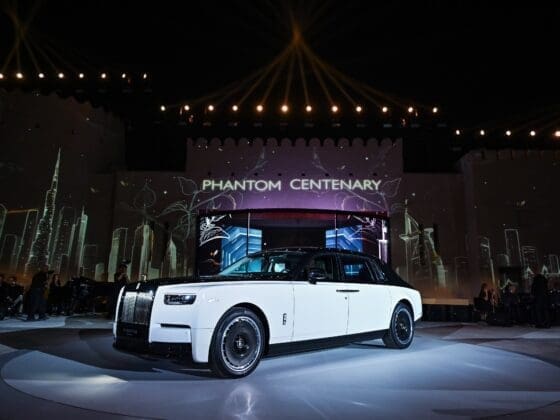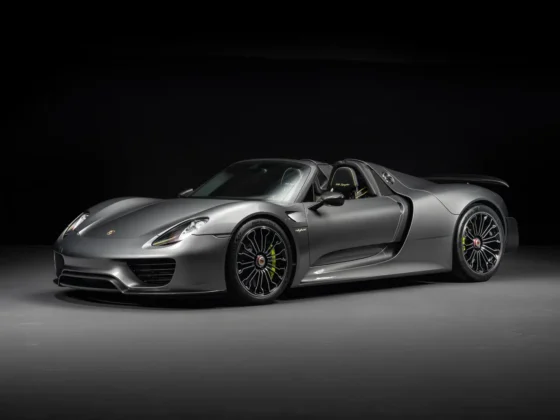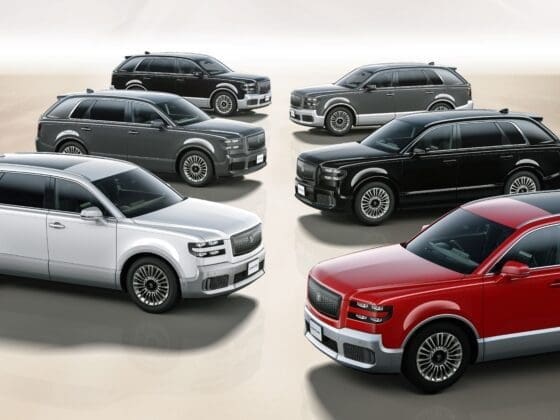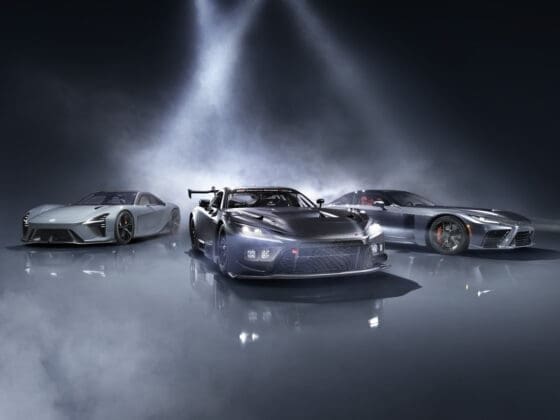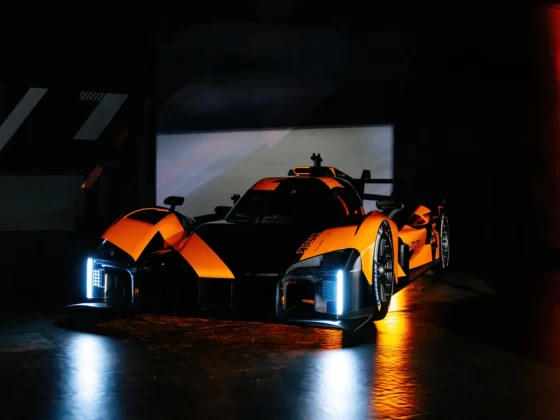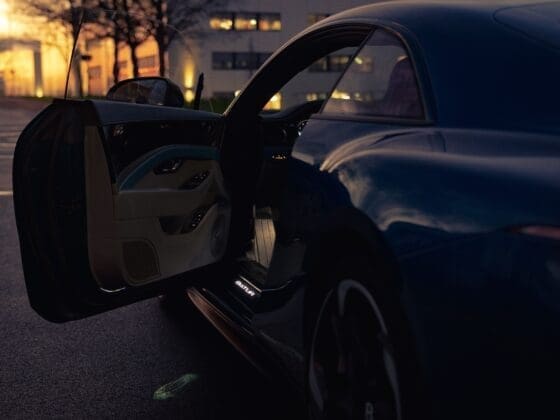A 1955 Ferrari 410 Sport Spider, with chassis No. 0592 CM, is expected to bring the hammer down in excess of USD 15 million when it goes on sale at RM Sotheby’s Monterey Car Week on August 17. Its USP is a combination of three historical facts.
It is a tailor-made, one-off coachwork by the masterful Sergio Scaglietti. It is the last racing Ferrari built for Tony Parravano, a Southern California sports car racing impresario of the 1950s. And most importantly, it was driven by the legendary Carroll Shelby to overall victory at the 1956 Palm Springs Road Races.

The Ferrari 410 Sport Spider owes its existence to a winless 1955 racing season for Enzo and his Scuderia Ferrari. To salvage some pride, development began on a new series of chassis designed for the final championship contest of 1955, the Carrera Panamericana. These new chassis, designated with a CM “Carrera Messicana” suffix, had a wide, low-riding tubular spaceframe with a shorter wheelbase than its predecessors. Engineer Aurelio Lampredi chose the 4961cc V-12 engine recently built for the 410 Superamerica road car as its power plant. It was Ferrari’s largest power plant to date.
However, midway through the new car’s development process, the Carrera Panamericana was cancelled. Ferrari built only four examples of the resulting 410 S, whose chassis numbers, in chronological order, are: 0592 CM, 0594 CM, 0596 CM, and 0598 CM. The final two cars were repurposed for the 1956 1000 KM of Buenos Aires. Chassis number 0594 CM was completed as a grand touring coupe called the 410 Speciale and sold into private ownership.

The ‘0592 CM’ 410 Sport, widely understood to be the initial development car, became neither a factory racer nor a sedate roadgoing car, but rather a 410 Sport Speciale prototype that was transitioned into a privateer racecar by one of the American West Coast racing scene’s most colourful team principals.
The Italian-born Tony Parravano made his fortune in Southern California’s housing development boom. His deep pockets allowed him to indulge in his passion for racing Italian sports cars, not as a driver but through his Scuderia Parravano. The team quickly made a name for itself in SCCA events, featuring top-grade drivers like Carroll Shelby, Ken Miles, and Phil Hill.

Parravano’s native command of Italian, his ability to travel without respect to cost, and his irrepressible confidence carried him to an unusual degree of latitude within the Ferrari factory. Thus, Parravano could customise his cars the way he wanted, and reportedly consulted directly with Scaglietti about coachwork features.
While 0592 CM’s styling is outwardly similar to the later cars at a glance, there are some notable differences. This spider has a more standard hood design, as opposed to the fender-enveloping hoods of the later cars. In addition to a longer tail, a mammoth ovoid grille, and a huge intake vent on the hood, the lowered coachwork is further distinguished by trademark Parravano cross-hatched fender-vent louvres, a feature that he ordered on many of his cars.

The 410 Sport was entered in the Palm Springs Road Races in February 1956, where it was piloted to overall victory by none other than Carroll Shelby. By this time, Shelby had already driven a number of events for Scuderia Parravano and was fed up with Parravano’s meddling with the cars in the pits. As a result, this race proved to be his final outing under the Italian’s banner.
After switching to John Edgar’s team, Shelby would go on to have massive racing success in a sister 410 Sport, chassis 0598 CM. Coincidently, this car was also sold at RM Sotheby’s Monterey auction, in 2022, for USD 22 million. Shelby’s success with the 0598 CM, together with his victory in 0592 CM, helped put him on the racing map and paved the way to his famous overall victory with Aston Martin at the 1959 24 Hours of Le Mans.

In February 1957, the 0592 CM raced for Scuderia Parravano at New Smyrna Beach, Florida, where Eric Hauser finished 4th in the preliminary race. The little-known Bart Spiegelman then drove in the main event but retired early, and this marked the end of the car’s SCCA racing career.
A federal tax lien compelled Parravano to flee for Mexico in mid-1957. While most of the cars in his collection were impounded, some made it south of the border. Chassis number 0592 CM was one. In April 1960 Parravano was scheduled to return to the US for a court date, but he never arrived, and no one ever saw him again.

Parravano’s estate eventually sold the cars in Mexico to local enthusiasts in the early 1960s, with the 410 Sport acquired by Javier Velasquez of Mexico City, one of the organizers of the Mexican Grand Prix. The Ferrari was then raced in 1964 in the Carrera de Costa a Costa Mexico, from Veracruz to Acapulco, by Juan Buchanon. In 1971, Velasquez sold the car to architect Robert Dusek, thus joining one of the most significant American Ferrari collections of the 1960s and 1970s.
In June 2008, after 37 years of custody, Dusek sold the 410 Sport to one of Germany’s foremost Ferrari collections. After the current owner acquired it in 2014, the 410 was treated to a comprehensive restoration by two of the Ferrari niche’s most respected craftsmen. Engine guru Patrick Ottis rebuilt the massive V-12, while Brian Hoyt refurbished the chassis systems and coachwork. Beautifully restored, the 410 Sport was presented at the 2018 Pebble Beach Concours d’Elegance.

The 0592 CM is arguably the most original of the four 410 S examples, as it retains its original matching-numbers engine, and was never been damaged during its short racing career. A true one-off Speciale big-block V-12 driven to victory by the legendary Carroll Shelby with Scuderia Parravano at one of America’s most iconic circuits of the 1950s, this prototype 410 Sport is undoubtedly one of Ferrari’s most impressively specified and designed racing spiders of the golden age of American sportscar racing.
Note: All images displayed here are courtesy of RM Sotheby’s


